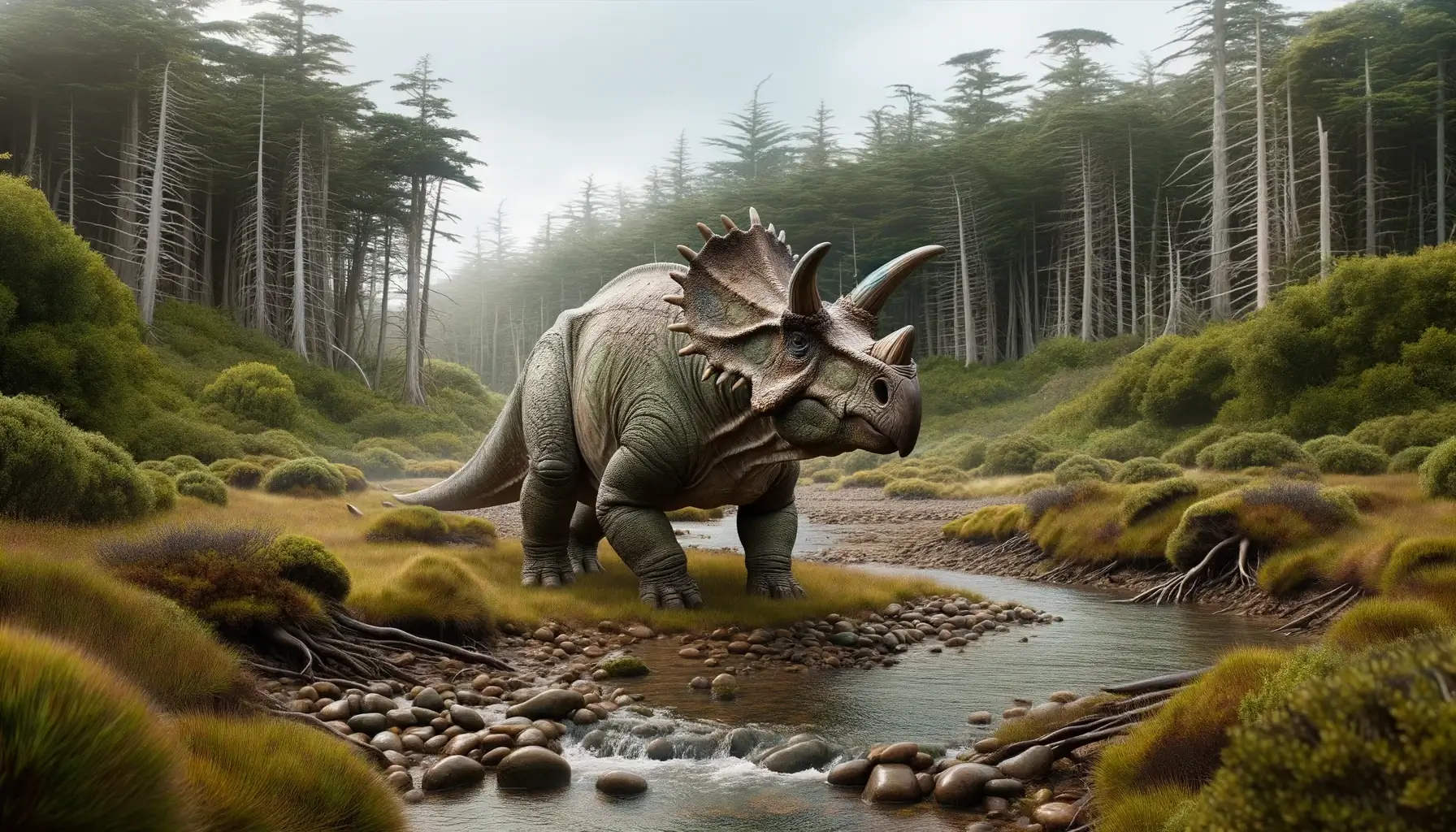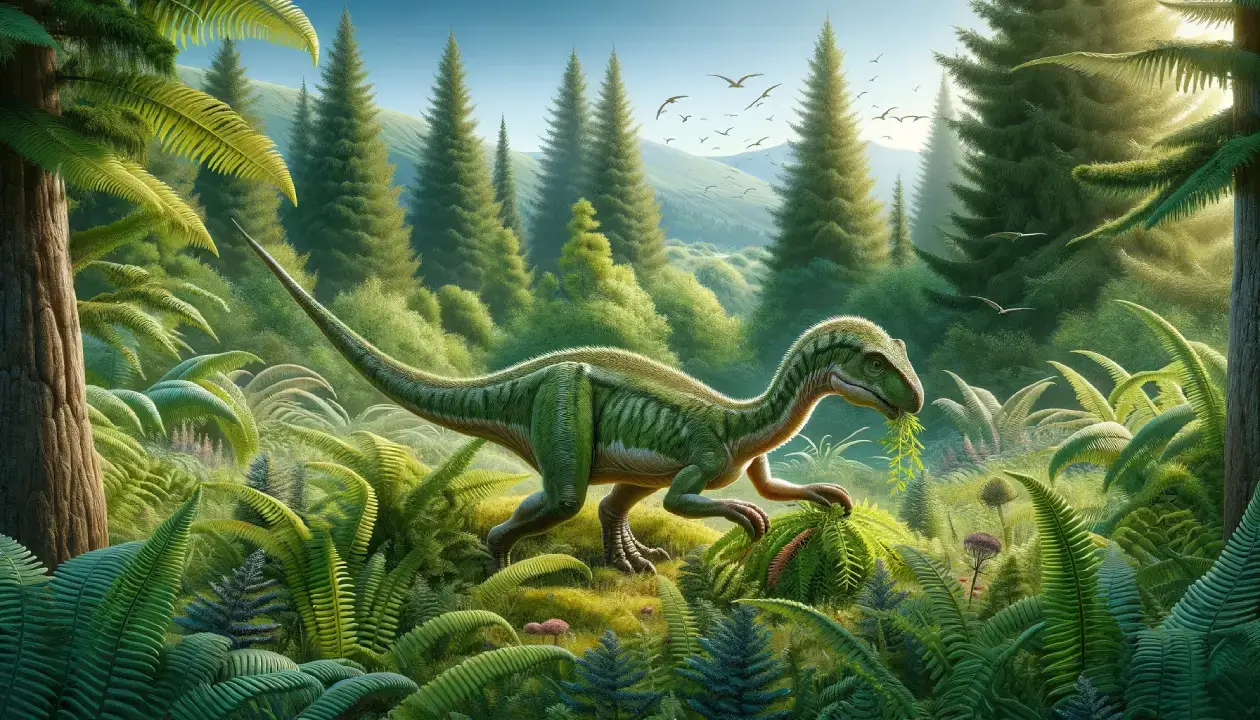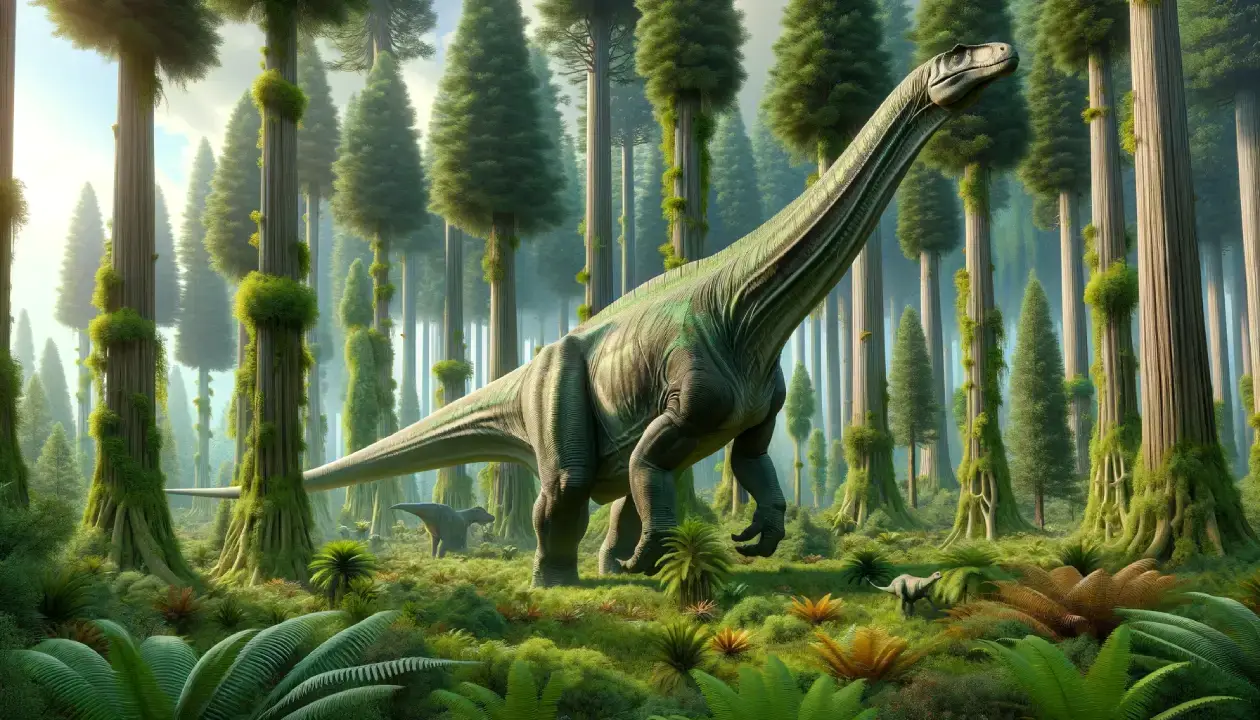Albertaceratops was a unique horned dinosaur that lived in what is now Alberta, Canada, and Montana, USA, during the Late Cretaceous period, about 80 to 75 million years ago. It was one of the first dinosaurs to be discovered in Alberta, and its name means “Alberta horned face”. It had a pair of long brow horns and a bony ridge over its nose, unlike other members of the centrosaurine subfamily. It also had two large hooks on its neck frill that may have been used for display or defense.
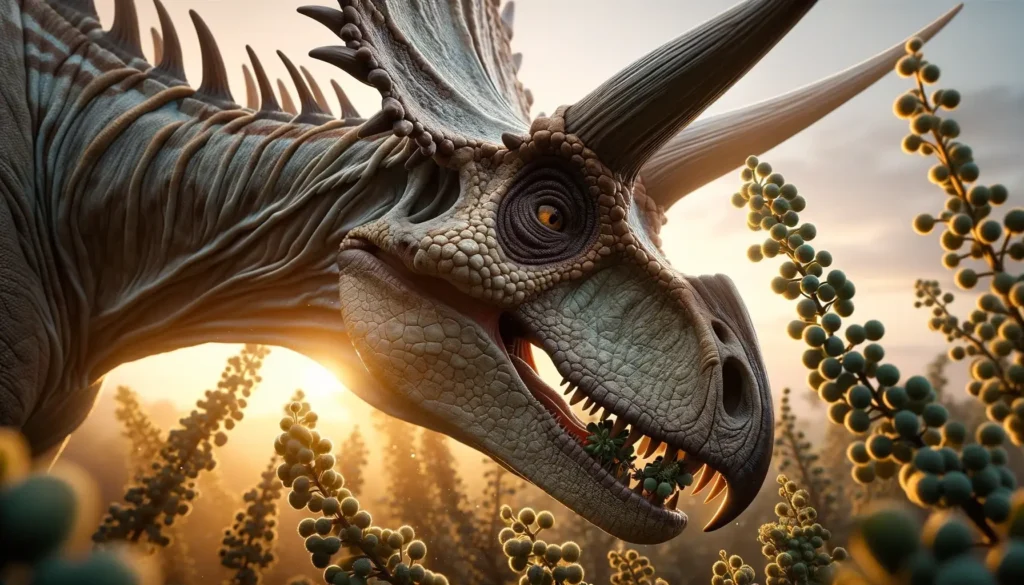
Basic Information
| Feature | Details |
| Time Period | Late Cretaceous (80-75 million years ago) |
| Diet | Herbivore |
| Length | About 6 meters (20 feet) |
| Weight | About 3,500 kilograms (7,700 pounds) |
| Size | Medium |
| Posture | Quadrupedal |
| Locations | Canada (Alberta) |
| Continent | North America |
| Type | Ceratopsian |
| Habitats | Ridge |
Description of Albertaceratops
Historical Context
Albertaceratops was first discovered in 2001 by a team of paleontologists led by Michael J. Ryan, who also named and described it in 2007. The fossils of Albertaceratops were found in the Oldman Formation, a rock layer in the Neuquén Basin of Alberta, Canada, which gives the dinosaur its name. Albertaceratops is known from a single complete skull and some fragments of the skeleton. Additional specimens were reported from a bone bed in the Judith River Formation of Montana, which is equivalent to the Oldman Formation and differentiated only by the Canada–US border. However, further study showed these remains to belong to a different ceratopsian, Medusaceratops. Both dinosaurs lived during the same time period, about 77.5 million years ago. The specific name, A. nesmoi, is derived from the name of Cecil Nesmo, a rancher living in Manyberries, Alberta, who helped the fossil hunters.
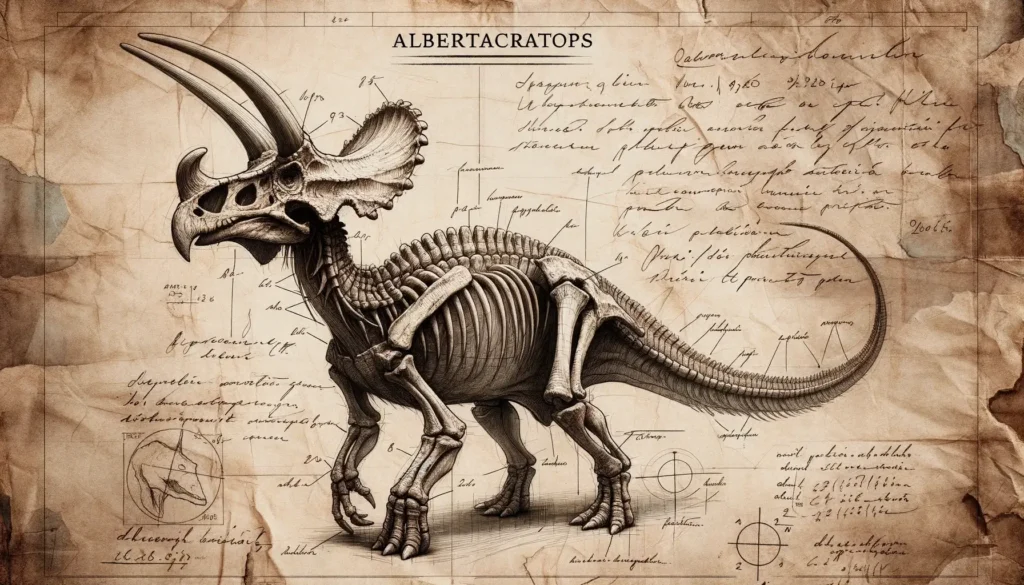
Physical Attributes
Albertaceratops was a medium-sized ceratopsian, a group of horned, plant-eating dinosaurs that includes some of the most famous dinosaurs, such as Triceratops and Styracosaurus. However, compared to other ceratopsians, Albertaceratops had some unique features. Its skull was about 1.3 meters (4 feet) long, with a short snout and a large frill that extended behind its head. Its teeth were spoon-shaped and adapted for cropping low-growing vegetation. On its nose, it had a bony ridge that may have supported a small horn. Over its eyes, it had long and slender brow horns that measured up to 80 centimeters (2.6 feet) in length. These horns were curved backwards and slightly twisted. On its frill, it had two large hooks that projected outwards and upwards. These hooks were about 30 centimeters (1 foot) long and may have been used for display or defense.
Feeding Habits
As a herbivore, Albertaceratops fed on plants, mainly ferns, cycads, conifers, and ginkgoes that grew in the ridge habitat of North America during the Late Cretaceous. Unlike some other ceratopsians that could reach high branches with their long horns or frills, Albertaceratops probably browsed on plants that were closer to the ground. It may have used its strong neck muscles to pull down branches or strip leaves from stems. It is possible that Albertaceratops swallowed stones (gastroliths) to help grind up the plant material in its stomach.
Unique Features
The most distinctive feature of Albertaceratops was the combination of long brow horns and a centrosaurine skull. Centrosaurines are a subgroup of ceratopsians that normally have short brow horns and elaborate frills with spikes or hooks. Albertaceratops is the only known centrosaurine that has long brow horns like those of chasmosaurines, another subgroup of ceratopsians that includes Triceratops. The function of these horns is still a matter of debate among scientists. Some possible explanations are:
- The horns were used for display or combat with other members of the same species or different species. The horns could have been used to signal status or mood, attract mates or intimidate rivals, or fight for territory or resources.
- The horns were used for defense against predators or parasites. The horns could have been used to fend off attacks from carnivorous dinosaurs or biting insects.
- The horns were used for thermoregulation (controlling body temperature). The horns could have been used to dissipate heat or retain heat depending on the environmental conditions.
Movement and Speed
Albertaceratops was a quadrupedal dinosaur, meaning it walked on all four legs. It had short but powerful limbs that supported its heavy body. Its front legs were slightly shorter than its hind legs, giving it a sloping posture. Its feet had five toes each, with claws on the first three toes. Albertaceratops was not a fast runner, but it could probably move at a moderate pace when needed. Its leg bones were more sturdy than those of today’s white rhinoceros, which can gallop at speeds of up to 50 kilometers per hour (31 miles per hour).
Cultural Impact
Albertaceratops is one of the most recent and rare ceratopsians to be discovered and named, and thus it is not very well known among the general public. However, it has appeared in some books, documentaries, video games, and toys that feature dinosaurs. Some examples are:
- The book The Complete Dinosaur (2012), edited by M.K. Brett-Surman, Thomas R. Holtz Jr., and James O. Farlow, which includes a chapter on Albertaceratops by Michael J. Ryan.
- The documentary Prehistoric Park (2006), produced by Impossible Pictures, which features Albertaceratops in the episode “”Supercroc”” as a prey item for a giant crocodile.
- The video game Jurassic World Alive (2018), developed by Ludia, which allows players to collect and battle with various dinosaurs, including Albertaceratops.
- The toy line Jurassic World Dino Rivals (2019), produced by Mattel, which includes an Albertaceratops figure with movable head and tail.
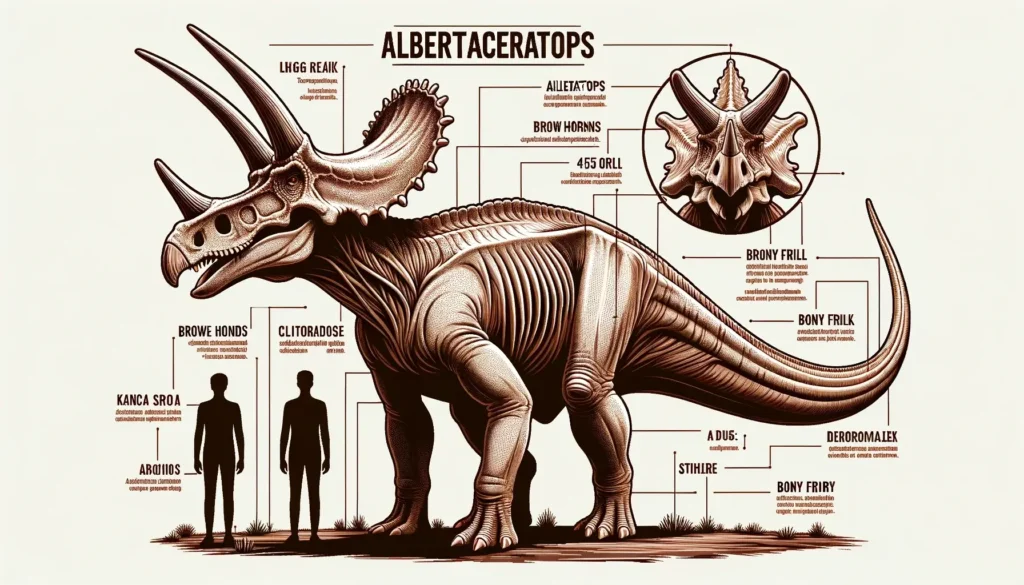
Interesting Facts
- Albertaceratops is related to some of the most famous dinosaurs, such as Triceratops and Styracosaurus, which belong to the same group of ceratopsians called ceratopsids.
- Albertaceratops lived in a diverse and rich ecosystem that included other ceratopsians, such as Anchiceratops and Pachyrhinosaurus, as well as theropods, such as Daspletosaurus and Troodon.
- Albertaceratops is one of the few ceratopsians that have a partial skull preserved, which gives us a better understanding of its anatomy and horn configuration.
- Albertaceratops may have lived up to 80 years old, based on the growth rings in its bones.
Related Dinosaurs
- Anchiceratops: A close relative of Albertaceratops that also had long brow horns and hooks on its frill, but with a longer snout and more teeth.
- Triceratops: A distant cousin of Albertaceratops that had the longest brow horns of any ceratopsian, as well as a short nose horn and a large frill.
- Brachyceratops: A small and primitive ceratopsian that had no horns at all, but had a short frill with four small spikes.

